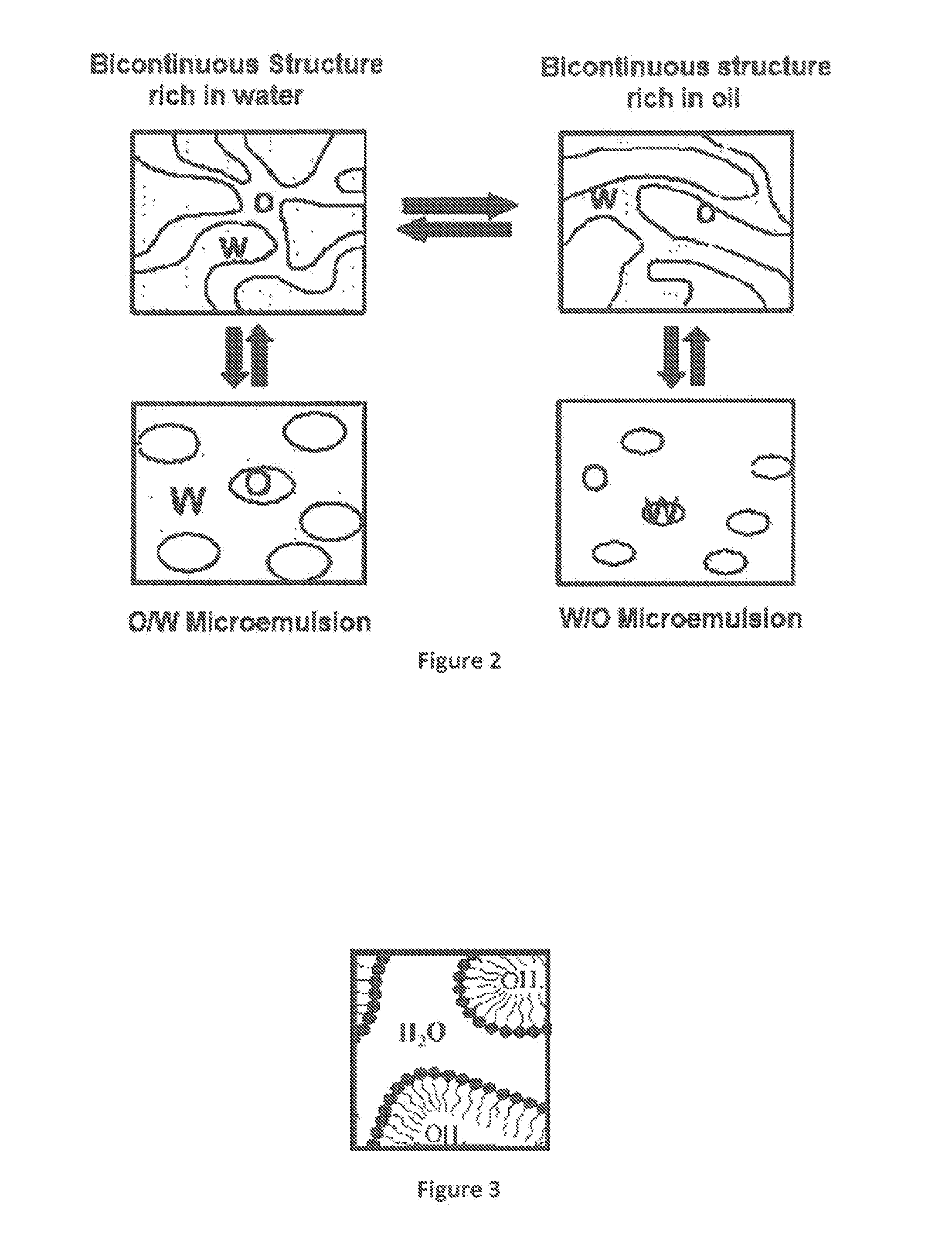Microemulsions of lipidated glycines and phenoxy ethanol for preservation of personal care products
- Summary
- Abstract
- Description
- Claims
- Application Information
AI Technical Summary
Benefits of technology
Problems solved by technology
Method used
Image
Examples
example 1
Synthesis of Blend of N-Undecylenoyl Glycine and N-Capryloyl Glycine
[0051]To a stirred mixture of glycine (225 g, 3.0 gmol) in water (1700 g) at 25° C. under nitrogen, is added mixture of capryloyl chloride (255 g, 1.54 gmol) and undecylenoyl chloride (255 g, 1.24 gmol) and sodium hydroxide solution (478 g of 48.5% aqueous solution, 5.8 mmol) simultaneously while maintaining temperature between 20 to 25° C. and pH between 9.5 to 10.5. The addition takes 4 to 5 hours depending on the efficiency of temperature control. The reaction mass is stirred for additional two hours. It is further acidified by addition of concentrated hydrochloric acid. The precipitated solid is filtered and washed with plenty of water to remove the mineral acidity. The mixture of lipidated glycines is obtained as solid powder (595 g, 95%) after vacuum drying at 65° C. The dried powder had moisture content less than 1% and acid value of 258. The HPLC analysis of the powder indicated it to nearly 50:50 ratio of N...
examples 2 to 10
The Isotropic Microemulsions are Prepared Following a Typical Procedure Given Below
[0052]To a stirred suspension of N-undecylenoyl glycine and N-capryloyl glycine from Example 1 in water at room temperature, sodium hydroxide flakes are added gradually ensuring no increase of the temperature of the reaction mass. To this stirred mass, phenoxy ethanol is added and the reaction mass is stirred at room temperature till it becomes homogeneous and transparent. The results are tabulated below in tables IV and V.
TABLE IVLipidated glycinesPhenoxyNaOHof Example 1ethanol (PE)WaterflakesBlend No.% w / w% w / w% w / w% w / wpHExample 211.24541.82.7.50Example 3135232.52.56.5Example 4520741.07.0Example 51647.5333.56.5Example 6115531.52.57.00
TABLE VN-capryloylN-undecylenoylUndecylenoylBlendGlycineGlycineMEA amidePEWaterNaOHNo.% w / w% w / w% w / w% w / w% w / w% w / wpH %Ex 7884834.41.66.5Ex 8884834.61.46.5Ex 984842.61.46.5Ex 10154537.12.96.4
example 11
Microemulsion with Phenoxy Ethanol, Lipidated Glycines, Water and Dehydroacetic Acid
[0053]To a stirred suspension of N-undecylenoyl glycine and N-capryloyl glycine (13 g) from Example 1 in water (33.5 g) at room temperature, sodium hydroxide flakes (2.45 g) are added gradually ensuring no increase of the temperature of the reaction mass. To this stirred mass, dehydroacetic acid (6.5 g), followed by phenoxy ethanol (45.0 g) is added and the reaction mass is stirred at room temperature till it becomes homogeneous and transparent instantaneously. The pH is adjusted to 6.5 with caustic lye to afford the pale yellow thin isotropic microemulsion.
PUM
| Property | Measurement | Unit |
|---|---|---|
| Percent by mass | aaaaa | aaaaa |
| Weight | aaaaa | aaaaa |
| Ratio | aaaaa | aaaaa |
Abstract
Description
Claims
Application Information
 Login to View More
Login to View More - R&D
- Intellectual Property
- Life Sciences
- Materials
- Tech Scout
- Unparalleled Data Quality
- Higher Quality Content
- 60% Fewer Hallucinations
Browse by: Latest US Patents, China's latest patents, Technical Efficacy Thesaurus, Application Domain, Technology Topic, Popular Technical Reports.
© 2025 PatSnap. All rights reserved.Legal|Privacy policy|Modern Slavery Act Transparency Statement|Sitemap|About US| Contact US: help@patsnap.com



